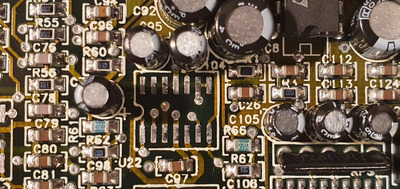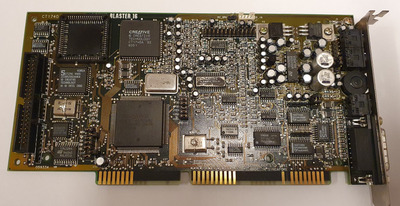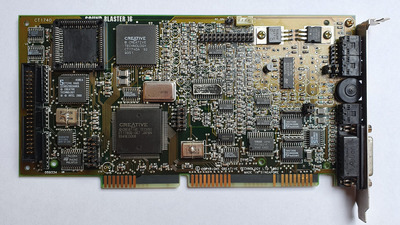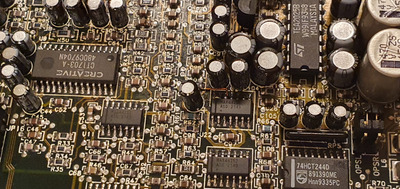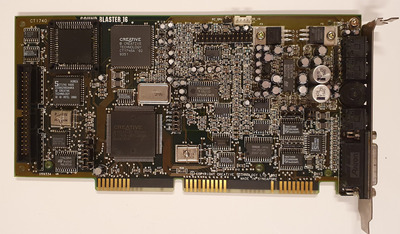First post, by Physikant
Hi guys,
I'm currently trying to upgrade the sound setup of my DOS-PC. It currently runs a Gravis Ultrasound Extreme, but even with its ESS chip, it has some trouble compatibility-wise.
Well, so i thought: why not get just the most standard sound card, a good old sound blaster.
I picked the SB16 because of it's true OPL3 in combination with a WTH, and my CTM1740 even has an old enough DSP so the hangig note bug is not present. But they call this thing the noise blaster! Thats painful.
Well, I have quite some experience in electronics development and reverse engineering. Perhaps something can be done here?
Enough of the stories, here is the reason for this post:
I'm thinking of options to upgrade my SB16 to reduce the noise blaster-ness of it. I've read that the DAC is one of the bigger problems here, especially the old versions like the one on my card. And the wavetable header is another source of noise.
So here is my question:
Do you guys have any ideas what could possibly be done to this card to improve its sound quality? I would start with replacing all its electrolytic capcitors with tantalum/ceramic types, just for its longevity. Another idea would be transplanting a newer version of the DAC from another card to this one (if the interface is the same? any infos here?). Perhaps adding some filtering to the output? Replacing the amplifier circuit?
I know that this is some kind of sacrilege doing such ugly mods to a good old card, but the SB16 is not that rare and for me, compatibility and authenticity of the sound are my main goals, but perhaps without the unwanted (and unintended!) noise.
I hope you guys can help me 😀
Nikolas
